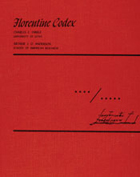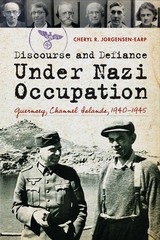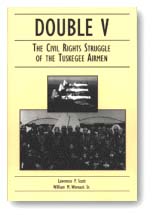Table of Contents:
BOOK FOUR
1. Telleth of the first sign, which was named One Crocodile, and of the good fortune which they merited who were born then
2. Telleth of the second [day] sign, which was named One Ocelot, and was not a good sign day for those who were born on it
3. Telleth of the third sign, named One Deer
and the good forune which those then born merited
4. Telleth of the second house, when it was the time of this sign, named Two Rabbit
and those then born in it did nothing but drink wine
5. Telleth how many kinds of drunkards there were
6. Telleth of still another house on the sign [One Deer], called Three Water
7. Telleth of the fourth sign, named One Flower
8. Telleth of the fifth sign, named One Reed. And it was not a good day....
9. Telleth of the sixth sign, called One Death, and of the good fortune belonging to it
10. Telleth of still other houses, which were called in part good, and in part evil and miserable
11. Telleth of the seventh sign, named One Rain, and of the evil day signs which belonged with it
12. Telleth of still other houses. Some were only indifferent and some were in no way good
13. Here is told and mentioned what was an evil manifestation for him who stumbled or fell at this time
14. Telleth of the good day signs which correspond to the four houses in this sign
15. Telleth of the eighth sign, called One Grass, and the evil day signs with it
16. Telleth of the ninth sign, called One Serpent
17. Telleth of the admonitions of the old merchants when they counseled their sons as they were about to depart
18. Here are told [what] the talk and discourse were of these same old merchants which they repeated to their sons who already knew distant lands
19. Here are told the offerings, which they made for the sake of those who traveled to far places, and how respect was paid for the sake of those who died
20. Telleth of the remaining houses belonging to the sign mentioned
21. Telleth of the tenth sign, called One Flint Knife
22. Telleth of the eleventh sign, called One Monkey, and of its fortune
23. Telleth of the twelfth sign, called One Lizard
24. Telleth of the thirteenth sign, called One Motion
25. Telleth of the fourteenth sign, called One Dog
26. In which it is told how these rulers (upon the day sign mentioned) proclaimed war
27. In which it is mentioned the fifteenth sign, named One House
28. Telleth still more of the nature and condition of women born in this sign
29. Telleth of the sixteenth sign, called One Vulture
30. Telleth of the seventeenth sign, called One Water
31. Telleth of the eighteenth sign, named One Wind, and the evil, the bad, which was with it
32. Telleth of the tears, the lamentations, and the misery of those who had been robbed, whom those who danced with the dead forearm had plundered
33. In which is mentioned the nineteenth sign, named One Eagle
34. In which are told and mentioned what they did when they visited women recently delivered
35. Here is told what was done when they bathed their children, and how food was eaten when they gave them their names
36. Telleth how a feast was held, and what the order of service was, and how there was drinking of wine
37. In which is mentioned how they festivity was performed
38. Telleth of the twentieth and closing sign, called One Rabbit
39. Speaketh of all the day signs
40. Telleth of the rest [of the day signs] which formed a part of the day count
those still remaining, belonging to the day sign [One Rabbit]
Appendix of the Fourth Book, in the Spanish vernacular, which is justification in defense of the truth contained herein
• Introduction and explanation, newly made, of the calendar of the Indians of Anauac, that is, of New Spain
• Refutation of the above
• The treatise by that member of a religious Order proceedeth
• Refutation of the above
• To the reader
• Here followeth the reckoning of all the time-counts which these natives had
BOOK FIVE
1. Here are related the omens in which they believed when at night, someone heard some wild animal cry out, or when it seemed as if some old woman wept
2. In which is related the evil omen which they regarded in two ways: so it was when they heard that the white hooded hawk cried out....
3. In which it is told the omen taken as a portent when at night they heard as if someone shot iron arrows into something or as if he chopped wood....
4. In which is told the omen taken as a portent when the horned owl hooted
5. In which is told what was the omen of the screech owl
6. In which it told what the omen was, so that they took it as a portent, when someone saw a weasel which crossed in front of him
7. In which is told the omen so taken as a portent concerning the rabbit when they saw that now it entered one's house
8. In which is told the omen which all took as a portent when they saw the chafer
9. In which is related the omen which they regarded as a portent when an animal of strong stench, called a skunk, now entered one's home or else sprayed and loosed an odor
10. In which is related the omen, by which a portent was drawn, of ants or frogs, and mice
11. In which is told the omen from which a portent was drawn when, at night, they saw the towering men, the giants
12. In which is related what was another omen, whose name was "bundle of ashes"
13. In which are told the rest of the omens which showed themselves at night
Appendix to the Fifth Book
1. First Chapter, which telleth of the white amaryllis
2. Second Chapter, which telleth of the poinsettia
3. Third Chapter, which telleth of flowers artificially arranged
4. Fourth Chapter, which telleth of dried grains of maize
5. Fifth Chapter, which telleth of stepping over one
6. Sixth Chapter, which telleth of drinking
7. Seventh Chapter, which telleth of him who dipped into the cooking pot
8. Eighth Chapter, which telleth of tamales stuck [to the cooking pot]
9. Ninth Chapter, which telleth of the umbilical cord
10. Tenth Chapter, which telleth of the pregnant woman
11. Eleventh Chapter, which telleth of the woman lately delivered
12. Twelfth Chapter, which telleth of earthquakes
13. Thirteenth Chapter, which telleth of the [three] hearth stones
14. Fourteenth Chapter, which telleth of the tortilla doubled over on the griddle
15. Fifteenth Chapter, which telleth of small children who licked the surface of the grinding stone
16. Sixteenth Chapter, which telleth of him who leaned against a square pillar
17. Seventeenth Chapter, which telleth of the maidens who ate standing
18. Eighteenth Chapter, which telleth how maize cobs were burned
19. Nineteenth Chapter, which telleth of the woman with child
20. Twentieth Chapter, which telleth of the monkey's hand
21. Twenty-first Chapter, which telleth of the pestle and griddle
22. Twenty-second Chapter, which telleth of mice
23. Twenty-third Chapter, which telleth of turkey hens
24. Twenty-fourth Chapter, which telleth of turkey chicks
25. Twenty-fifth Chapter, which telleth of her wove with yarn
26. Twenty-sixth Chapter, which telleth of hail
27. Twenty-seventh Chapter, which telleth of sorcerers
28. Twenty-eighth Chapter, which telleth of the gnawed leavings of a mouse
29. Twenty-ninth, which telleth of nails
30. Thirtieth Chapter, which telleth of sneezing
31. Thirty-first Chapter, which telleth of small children
32. Thirty-second Chapter, which telleth of green stalks of maize
33. Thirty-third Chapter, which telleth of creaking roof beams
34. Thirty-fourth Chapter, which telleth of grinding stones
35. Thirty-fifth Chapter, which telleth of drilling a new fire in the house
36. Thirty-seventh Chapter, which telleth of the time when the teeth of small children dropped
Conclusion












